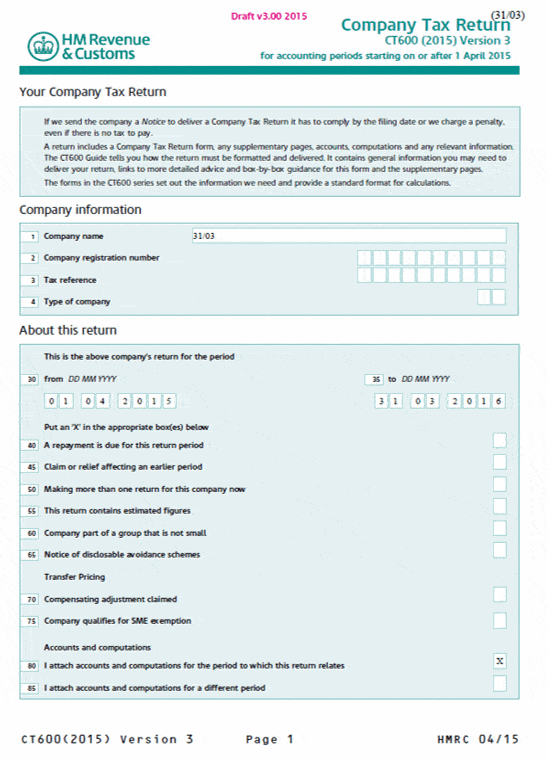The R&D tax credit is a UK government tax incentive that is aimed at encouraging the development of new or improved products, services, software or processes within your limited company.
It can provide a useful and often not insignificant cash injection and valuable source of funding for UK companies.
The claim value and resulting financial benefit varies according to whether a company is an SME or a Large company or whether it is in receipt of grant funding.
Generally, since its inception in 2000, the R&D tax relief has provided huge financial benefit to UK companies from startups to large and listed groups.
R&D tax credits are a Company Corporation Tax Relief
Companies need to file their R&D tax credit claim with HMRC.
This is the first key point to note:
The R&D tax credits relief is a Company Corporation Tax Relief
Claimant companies can receive either a reduction in corporation tax payable (if profitable) or a cash payment (if loss-making) from HMRC.
The R&D tax claim is made via your company tax return (technically called the 'CT600') as the relief is administered by HMRC. Qualifying costs are inserted into the tax return to make the R&D tax credit claim

Every company must file its CT600 corporation tax return with HMRC within 12 months of its financial accounting period end. Your accountant will typically prepare this tax return alongside the preparation of your financial statutory accounts.
Don't worry if you have already filed your company tax return - you may not be too late to file an R&D tax claim as you can file a retrospective claim for any R&D activities carried out in accounting periods ended in the past two years.
Do you qualify?
Although this article is focused primarily on the mechanics of how to actually file a Research and Development Relief claim, it is worth revisiting the key criteria that you must satisfy in order to have an eligible R&D claim.
You must have carried out:
- A project (one or more) in an accounting period that
- Seeks to achieve an advance in science or technology in your field or domain AND that
- The competent professionals within your company have had to overcome technological uncertainty in seeking to achieve the technical advance.
HMRC will be interested in the development activities that the competent professionals within your company have undertaken to seek to achieve advance - note that failed or aborted projects also qualify.
R&D Technical Narrative & Supporting Claim Calculations
In addition to a full and complete tax return, HMRC will expect you to file:
- A detailed technical narrative report that justifies how and why your R&D tax credit claim falls within the relevant BEIS Guidelines and corporation tax provisions AND
- Detailed supporting calculations that quantify the qualifying expenditure and calculate your research and development claim. Plus specify how you wish to receive the cash tax benefit i.e. as a reduction or refund of company tax payable or as a tax credit.
Gaining an understanding of the nature of the qualifying activities that your technical team have carried out and helping translate this into a detailed report and calculations - that fit within the strict definition of qualifying R&D for tax purposes - is where the bulk of our work is focused
How will I receive the R&D tax credit benefit?
There are a number of different ways in which you might receive the claim benefit, for example:
- as a reduction in company corporation tax due to be paid
- as a refund of company tax already paid
- as increased tax losses available to carry forward to offset against future profits
- as increased tax losses available to surrender as 'group relief' (to other eligible group companies)
- as a tax cash credit rebate
It is important that you (and your advisors) consider all the available options to ensure that you maximise your potential R&D tax credit claim benefit.
For example, the SME R&D tax credit scheme claim is calculated at a rate of 14.5%, whereas if you carry the losses forward for future relief then relief is obtained at the full future prevailing company corporation tax rate (currently 19%, potentially up to 25% from 2023).
You need to crunch the numbers to explore which option provides the optimum return for you - we can help.
The Large Company Scheme has different rates under the Research and Development Expenditure Credit (RDEC) although the claim process is largely the same in terms of required documents and deadlines.
How do I file my R&D tax credit claim with HMRC?
Once you have prepared a detailed R&D justification report and calculations to support your claim for research and development relief, these documents can be filed online via the Government Gateway HMRC portal (as attachments to the CT600 and tax computation) to help ensure that it is safely received by HMRC.
It is also a requirement from 1 April 2021 to file a supplementary form called the CT600L that is added to the CT600 return.
Who reviews my R&D tax claim?
HMRC has specialist R&D Tax Inspectors who review and process all R&D tax claims.
There used to be a number of specialist HMRC Units spread across the country, but over recent years the Units appear to have been consolidated.
Filing an amended CT600 return
If your tax return has already been filed and you are making a retrospective claim, then you can file an amended CT600 return to claim the benefit of the R&D tax relief.
Don't forget to include your bank account details
If your R&D tax claim will result in a cash refund or rebate from HMRC, don't forget to include your company bank account details in the relevant pages of the CT600 return to help ensure a speedy receipt of the funds.
How long before I receive my R&D tax credit cash rebate?
HMRC aims to process 95% of claims within 28 days (although this has extended to 40 days in 2022) - and we can testify that they do a pretty good job of sticking to this commitment.
As you can see, there's a lot to consider and 'get right' - so please reach out if you would like any help to ensure that you file a successful claim.






